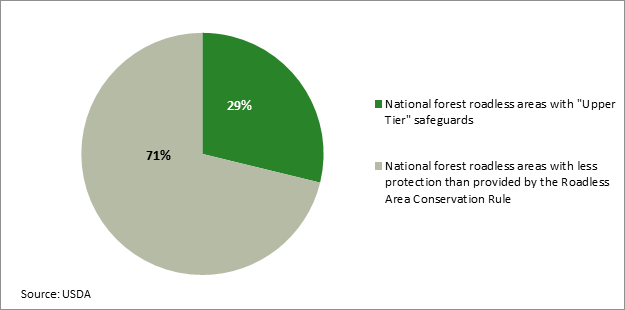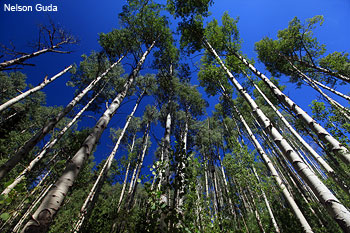USDA Issues New Colorado Roadless Forest Plan
Obama administration should make final policy live up to national standard
Jane Danowitz, director of the Pew Environment Group's U.S. public lands program, issued the following statement regarding an Obama administration plan that would replace the national Roadless Area Conservation Rule in Colorado's national forests.
“The Obama administration's new plan for Colorado's most pristine national forests is a significant improvement over its original proposal. But while this policy would provide strong safeguards for a portion of the state's roadless areas, it would set weaker standards than the roadless rule on the majority of lands, leaving them vulnerable to new road construction and oil and gas drilling. As a result, water quality, wildlife habitat, and the state's $10 billion recreation economy, including thousands of jobs, would be at risk.
“The importance of a national policy to preserve what remains of America's undeveloped forests cannot be overstated. The courts have affirmed that the 2001 roadless rule is the law of the land, and we look to the administration to deliver a final policy for Colorado that measures up to the standards the national rule sets.”

Background

The Roadless Area Conservation Rule was issued in 2001 to protect nearly 60 million acres, roughly one-third of undeveloped U.S. Forest Service lands in 38 states. It was the result of the largest public lands review process in U.S. history, with more than 1.2 million comments and 600 public hearings. The Bush administration attempted to replace the national rule with a discretionary state-based petition process, and Colorado became one of two states to pursue a separate rule for its 4.2 million acres of roadless areas. The State of Colorado has said that legal uncertainty around the national roadless rule was the rationale to develop its proposal. However, in October 2011, the status of the 2001 rule was resolved when it was upheld by the Tenth Circuit Court of Appeals.
The plan issued today by the U.S. Department of Agriculture, which oversees the Forest Service, is based on the State of Colorado proposal. It would expand coal mining in national forest roadless areas and could allow nearly 100 new oil and gas leases to go forward. In addition, the proposed policy would leave 71 percent of the state's most pristine forestlands with lesser protections that those provided by the 2001 rule.
Colorado's roadless areas are the source of about one-third of the state's surface water, and irreplaceable habitat for fish and wildlife. Colorado's national forests are also the economic engine for an outdoor recreation industry that injects $10 billion annually into the state's economy, including $500 million in state tax revenue and 107,000 jobs.
(Photo on homepage by Nelson Guda)











